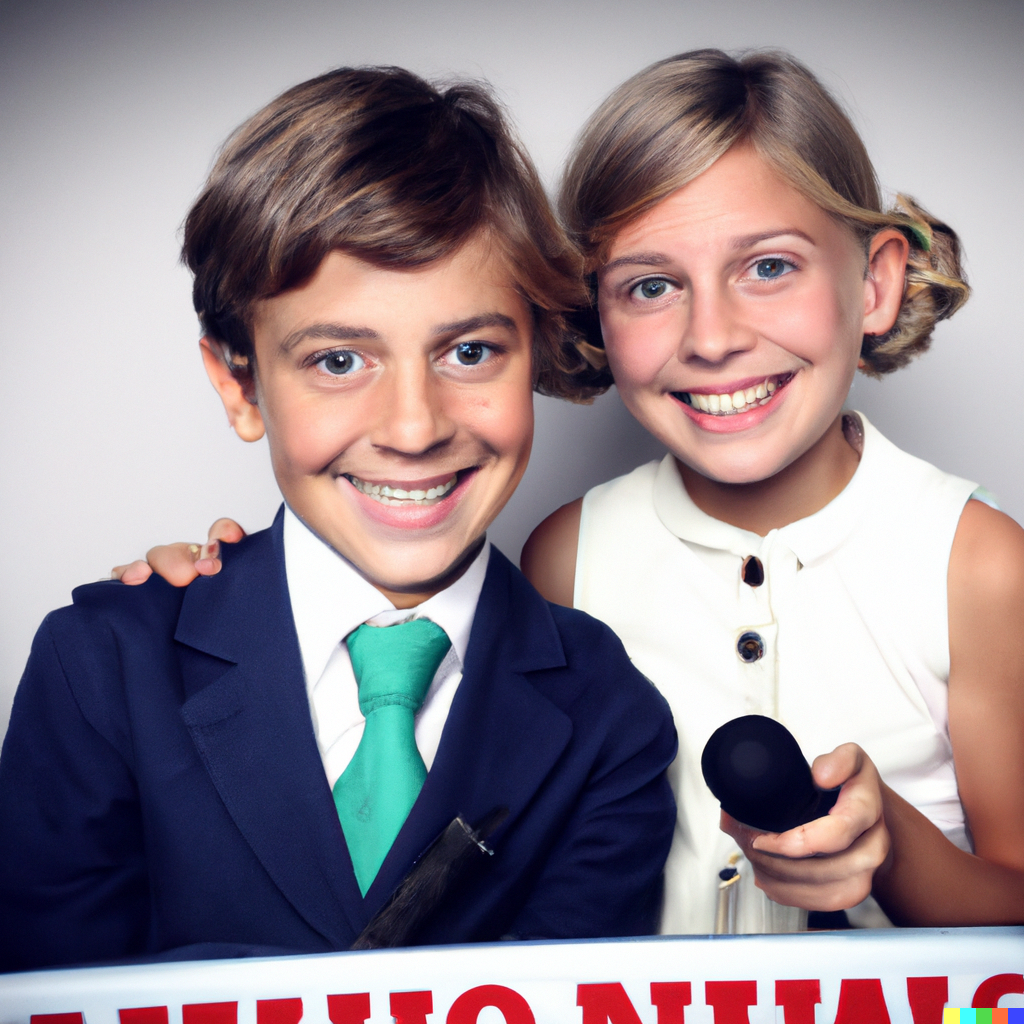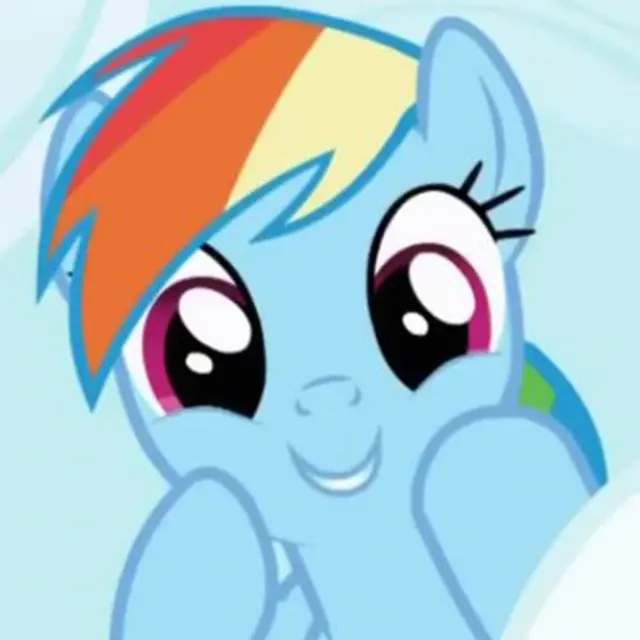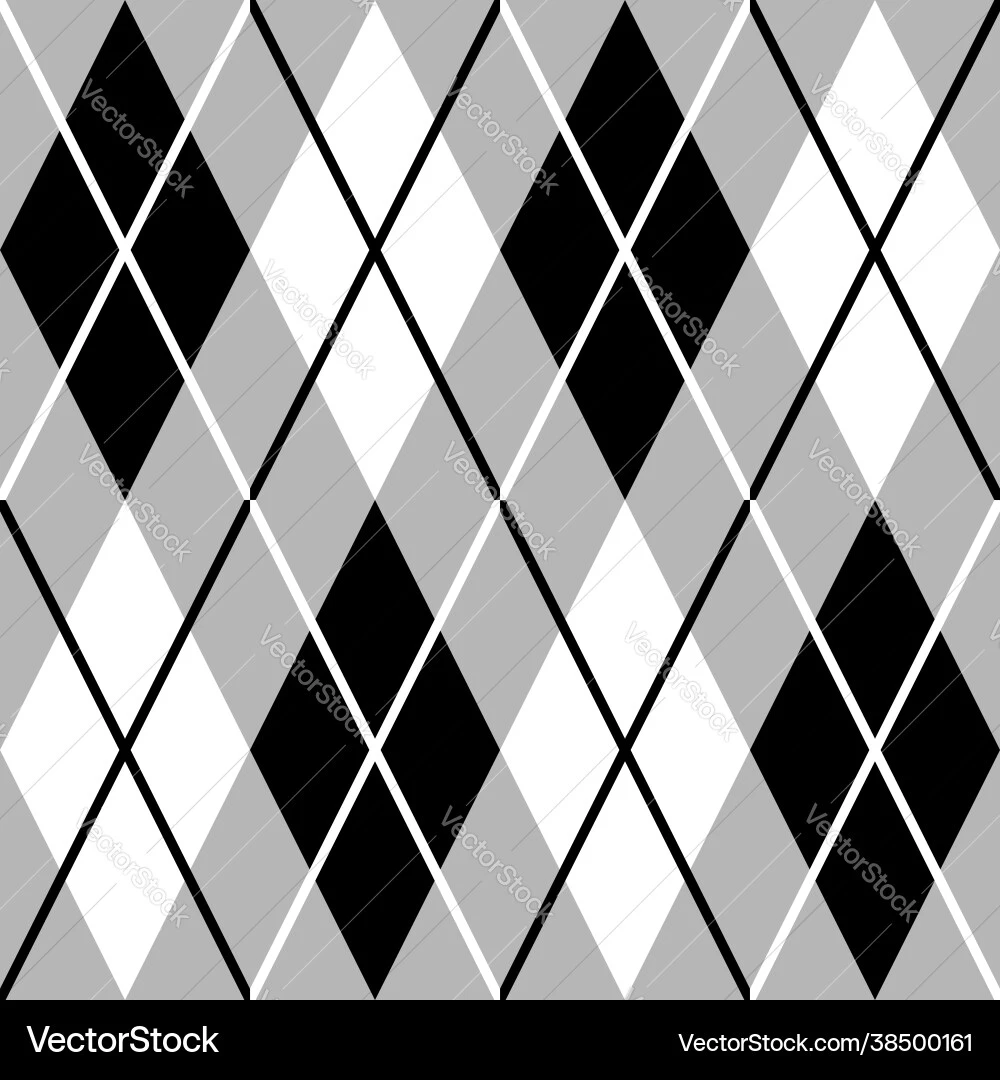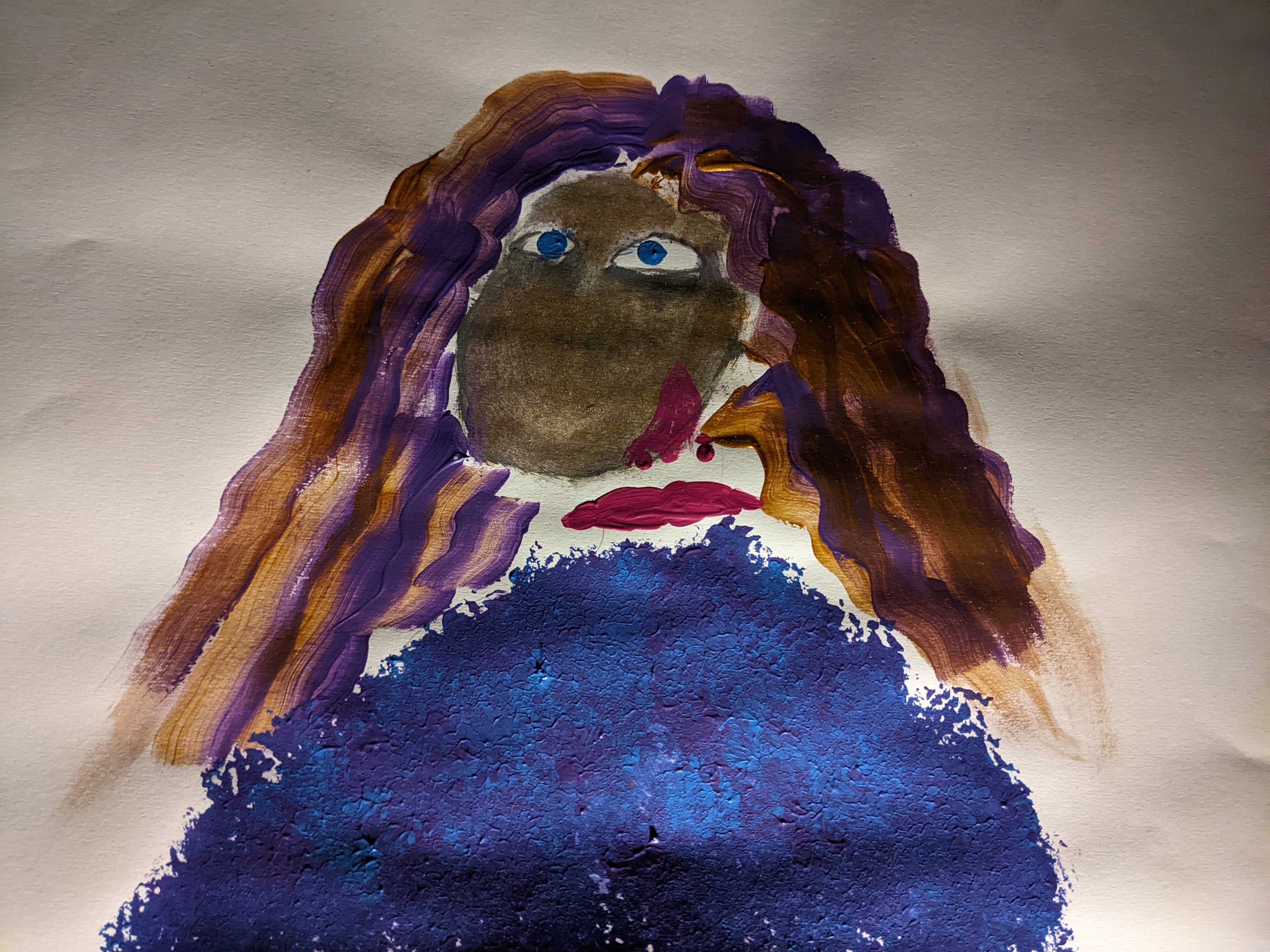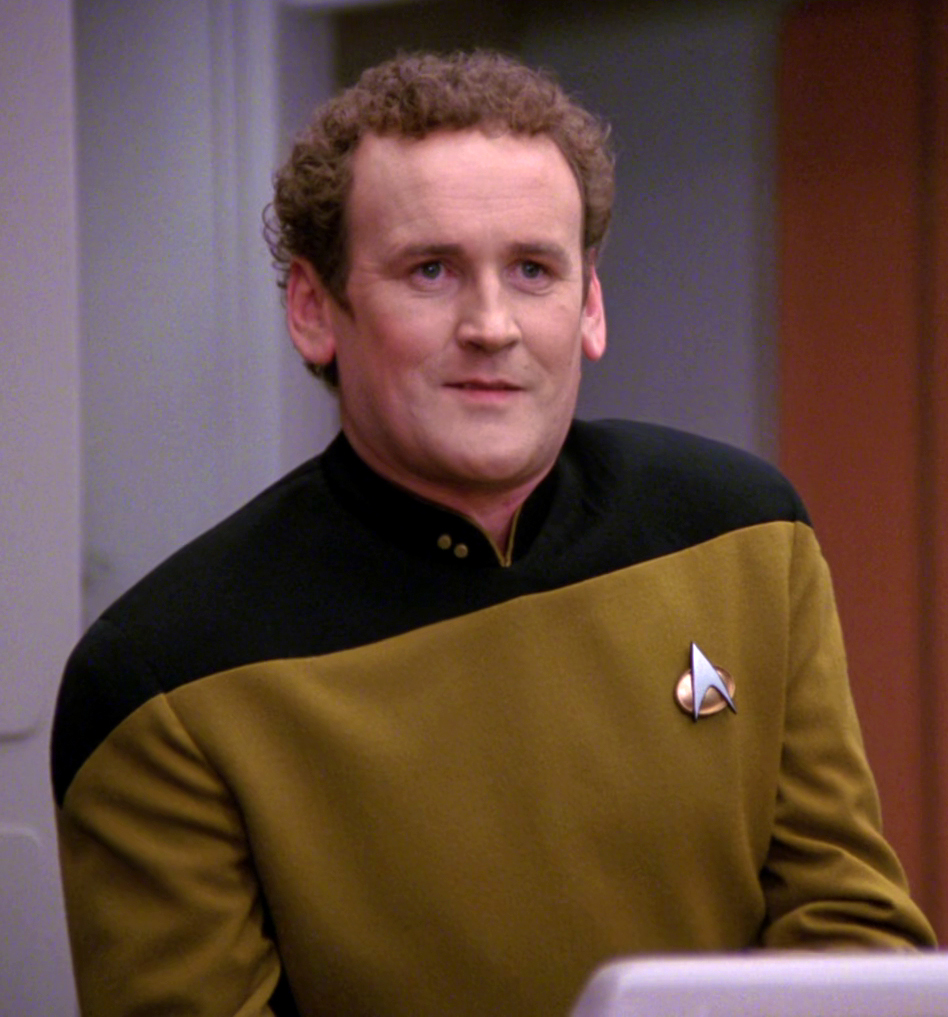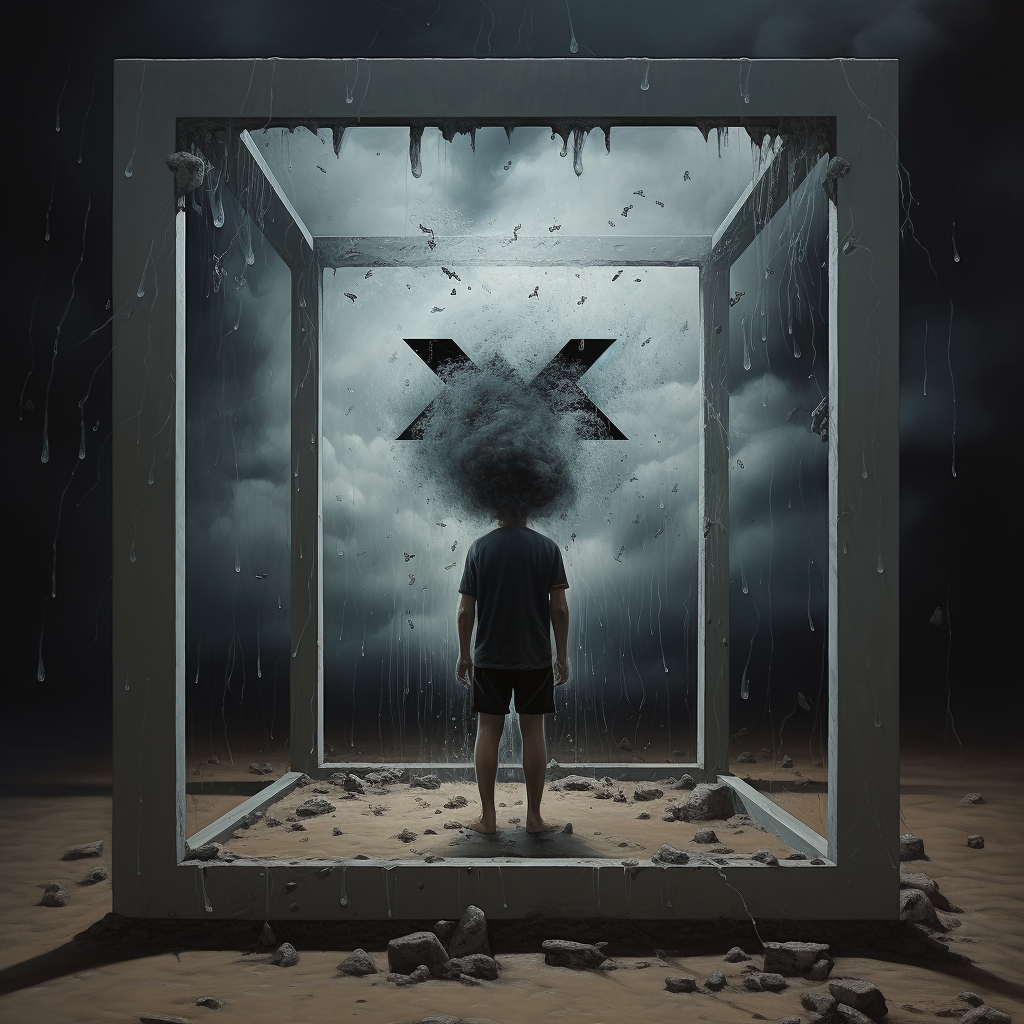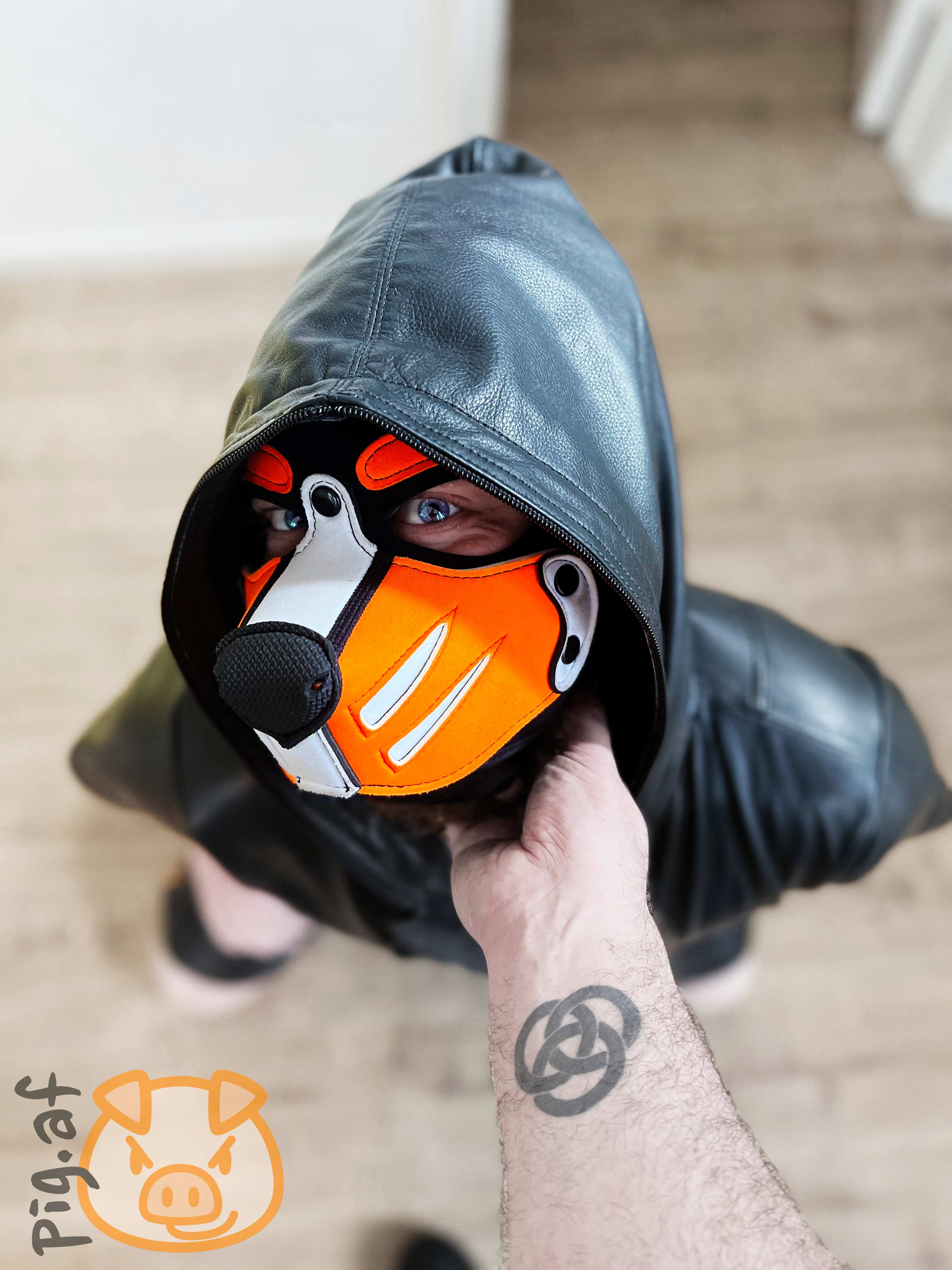Thousands of artists are urging the auction house Christie’s to cancel a sale of art created with artificial intelligence, claiming the technology behind the works is committing “mass theft”.
The Augmented Intelligence auction has been described by Christie’s as the first AI-dedicated sale by a major auctioneer and features 20 lots with prices ranging from $10,000 to $250,000 for works by artists including Refik Anadol and the late AI art pioneer Harold Cohen.
I’m going to say it again. It cannot be theft. Nothing is stolen. What did they have before they don’t have now?
I see people disagree with me but they are too lame to try and say why, and they definitely could not explain how, when there is nothing in AI but a probability algorithm.
If artists were compensated for their art being fed through the AI to feed the algorithm, sure. They are not. It’s not too dissimilar from our comments and data being farmed to better other LLMs and that is intellectual theft as well.
This easily results in humans having to pay licensing fees just to look at art, because humans also use past context
What is creativity? It’s nothing but what you have learned plus neural noise. If we try this Luddite dogmatic nonsense we’d have to kill human art as well, fucking THINK MARK, THINK!
I’m trying to square away what the difference is between this and George RR Martin reading Homer and Tolkien and others and then producing A Song of Ice and Fire…
I could have that discussion. But it still wouldn’t be theft. Nothing was actually stolen.
My understanding of AI art models is shakey at best but I think I remember that it basically uses the images to create a static (Litteral static like old school TV screen snow kinda) static model based on the image. Then it extrapolate based on 1000s of such static sudo images to create the original work. On a small scale I don’t think of it as theft. It’s not unlike a person using their past knowledge of image concepts to create a new image. Everyone hates AI though.
I can agree with downloading and sharing movies and media from the internet not beeing theft.
Even then it would be a copy. In this case it would be like downloading an amalgam of thousands of movies, not quite like any of them
When someone makes use of a service and doesn’t pay afterwards that is considered to be theft even if the provider hasn’t been deprived on anything. For example, if I snuck into an art gallery without paying I won’t remove anything tangible since the gallery’s overheads and running costs were fixed long before I arrived.
A better word would be copyright infringement if the AI is making use of other works without a license or other permission. Based on my reading of the article it appears those involved only fed the AI works in the public domain or works that they had created themselves. The letter of complaint appears to be signed by artists who are unaware of these circumstances.
Even in your latter paragraph, it wouldn’t be an infringement. Assuming the art was lawfully accessed in the first place, like by clicking a link to a publicly shared portfolio, no copy is being encoded into the model. There is currently no intellectual property right invoked merely by training a model-- if people want there to be, and it isn’t an unreasonable thing to want (though I don’t agree it’s good policy), then a new type of intellectual property right will need to be created.
What’s actually baffling to me is that these pieces presumably are all effectively public domain as they’re authored by AI. And they’re clearly digital in nature, so wtf are people actually buying?
There are cases progressing through the courts. If the courts rule that copyright has been violated by the AIs under current laws then we won’t need to create a new offense or expand IP laws currently on the books.
wtf are people actually buying
A unique work of art I guess since it’s unlikely anyone would be able to replicate the prompt in order to get the same results.
It could of course go up to the scotus and effectively a new right be legislated from the bench, but it is unlikely and the nature of these models in combination with what is considered a copy under the rubric copyright in the US has operated effectively forever means that merely training and deploying a model is almost certainly not copyright infringement. This is pretty common consensus among IP attorneys.
That said, a lot of other very obvious infringement in coming out in discovery in many of these cases. Like torrenting all the training data. THAT is absolutely an infringement but is effectively unrelated to the question of whether lawfully accessed content being used as training data retroactively makes its access unlawful (it really almost certainly doesn’t).
Phrases my friends would never use:
AI Art
I prefer the term “AI Fabrications” because of the dual-meaning of fabrication. On one hand it implies industrial fabrication, on the other hand it implies fabrication as in a lie. Because AI is both of those simultaneously. It is industrially fabricated and it is a lie.
In Croatian (and I suspect many other Slavic languages) art is umjetnost which is a variation of the word umjetno which means artificial.
Interesting. In finnish the word for art is ‘taide’. It’s etymological root word is ‘taito’, which means skill.
Why not “AI readymades”?
It would be kind of funny to offer AI schlock for sale and then give the buyer a framed copy of the prompt instead of the print itself
I would respect that as a kind of performance art.
Prompt, seed, model, LORAs, and better hope it’s a sampler that reliably produces the same results each time for the same input as not all of them do.
Nah, inability to produce the actual image is the point. All the “artist” did was type in a box, so that’s all the purchaser gets.
In principle all samplers are deterministic because they use PRNGs, any and all actual non-determinism you see is due to GPUs, underlying acceleration libraries playing fast+loose with numerical accuracy. Which they do because the models are generally robust against noise which is exactly what lacking numerical accuracy (or quantisation) is, but you can get into situations where, on direct comparison, it does make a difference.
AI is a red herring, in my opinion.
Some artists have spent over a century trying to one-up each other to the bottom, starting with Dadaism and even before that (anyone remember Salieri’s populist operettas?). It’s got to a point, where a black square on a canvas, or a banana taped to a wall, got called “art”.
Other artists, have been trying to transmit emotions and feelings through their work, using whatever tools at their disposal. Be it through words, paints, shapes, interactions, etc. With more or less success, but they’ve been trying.
An AI is another tool, like a camera is a tool, a brush is a tool, a chisel is a tool, a keyboard/typewriter is a tool, and so on. People can use their tools to produce low effort trash… or they can put effort and thought into what they want to transmit.
Good AI art, takes the same or more effort as good non-AI art, to make the AI produce what the artist intends. Retouching parts of the output, either with more AI or some other tools, refining or retraining the whole model, creating complex prompts to make the tool output something closer to the artist’s vision. That vision, is the core of the art.
Low effort AI art, is mindless theft, no dispute there, good for quick memes and little more.
Thoughtful AI art, is a conversation between an artist, and a tool with massive experience in observing other’s art, in order to extract the essence of what they can apply to their own. An AI works best as a brain extension, capable of reading all the books, seeing all the paintings and photos, watching all the movies, listening to all the sounds and songs, way beyond what’s possible in a single human lifespan. Then it’s the artist’s job to sift through that.
Focusing on just the “AI” part, does a disservice to the whole art community. Focus on the person instead… and if they’ve put no effort, then go ahead, feel free to laugh at the “art”, no matter which tools they’ve used… unless they admit to be still learning, in which case some encouragement and tips might be a better way.
chisels, brushes, and cameras don’t train on the existing work of humans and then “create” art. they are actual tools. ai is not able to do anything without training on and directly taking from the work of others.
if i’m inspired by dalí and rothko i can make work that references them, or even steals from them but my hand is also undeniably involved. ai is not inspired by works, it is trained on them for the purpose of copying. it’s stealing in the laziest possible way and can’t possibly include the hand of the maker because there isn’t one.
Under this logic you should pay royalties to the maker of your brush and the teachers who taught you. Maybe not everything is about owning shit.
I mean typically you buy the brushes and pay for the teaching one way or the other. AI isn’t paying any artist for training upon their work.
Who do you think has paid artists throughout history?
(Patrons is the answer)
There are three things to unpack there:
Tools don’t create art, neural networks wielding those tools create art.
Right now, human NNs are the most complex around the block, so our anthropocentric egotism tries to gatekeep art to humans… ignoring all the animal art out there, like for example birds building “beautiful” nests to attract mates (beautiful to each other, not necessarily to humans), all the art going on between fish, cephalopods, dolphins, whale songs, etc. There is also no guarantee that human NNs will remain supreme forever… and what then, will humans stop creating art, or will the ant tell the elephant that its art is not a thing?
Tools DO use existing human work, otherwise city photography could never be art, cultural photography could not be art, definitely a Campbell soup can could never be art… and so on. The Camera obscura has been used to “cheat” at art since possibly the paleolithic, then extensively “abused” by the likes of Leonardo da Vinci to copy both natural and human works.
Modern AI does way more than “copying”, it abstracts the underlying patterns, then integrates those abstractions with a prompt, to “make up” an output. Sometimes the output of the abstraction of an “A” looks like an “A”, other times it doesn’t. People keep putting AI down for “hallucinating”… but you can’t claim that it “hallucinates” and “copies” in the same sentence.
For an intro on how modern AIs work, I’d suggest checking: Neural Networks, by 3Blue1Brown
AIs have not been “copying” for several decades already, modern AIs are even farther away from that, and it’s just the tip of the iceberg.
It’s not gonna work. If these art AI thieves don’t care that they’re stealing then why would they care what the artists do or say?
Just because it’s not likely to stop the auction, doesn’t mean we shouldn’t scream loudly about it.
Good point.
I can’t buy into the theft idea. It is like describing ideas in mathmatical concepts. The ai contains nothing of the original.
Is there another word that fits better? I don’t know.
On the other hand, why would anyone buy art without knowing the artist? I commision art, I buy art, but I always get to know who it is from and in most cases how they made it: watercolor, oil, pen, etc.
I think plagiarism fits. Producing someone (or many someones) work as an original.
I love the high bar of philosophy and taste being set by the discussions here about what is and isn’t art, so please don’t let this note distract from those.
Joints like Christie’s and the stuff they sell is largely a money laundering operation. Without decrying what’s coming out of the modern art scene, art collection is where a lot of the capitalists rinse their stolen wealth. There’s an entire economy around this practice. Here’s a company that will hook you up with the vaults, the lawyers, jewelry to swap, and travel accommodations.
So obviously generative output bots do not make art and- and- BUT ALSO nothing capitalists value is real, they only believe in their fiat. It’s all always just money crime game to them. Always.
The question about if AI art is art often fixates on some weird details that I either don’t care about or I think are based on fallacious reasoning. Like, I don’t like AI art as a concept and I think it’s going to often be bad art (I’ll get into that later), but some of the arguments I see are centered in this strangely essentialist idea that AI art is worse because of an inherent lack of humanity as a central and undifferentiated concept. That it lacks an essential spark that makes it into art. I’m a materialist, I think it’s totally possible for a completely inhuman machine to make something deeply stirring and beautiful- the current trends are unlikely to reliably do that, but I don’t think there’s something magic about humans that means they have a monopoly on beauty, creativity or art.
However, I think a lot of AI art is going to end up being bad. This is especially true of corporate art, and less so for individuals (especially those who already have an art background). Part of the problem is that AI art will always lack the intense level of intentionality that human-made art has, simply by the way it’s currently constructed. A probabilistic algorithm that’s correlating words to shapes will always lack the kind of intention in small detail that a human artist making the same piece has, because there’s no reason for the small details other than either probabilistic weight or random element. I can look at a painting someone made and ask them why they picked the colors they did. I can ask why they chose the lighting, the angle, the individual elements. I can ask them why they decided to use certain techniques and not others, I can ask them about movements that they were trying to draw inspiration from or emotions they were trying to communicate.
The reasons are personal and build on the beauty of art as a tool for communication in a deep, emotional and intimate way. A piece of AI art using the current technology can’t have that, not because of some essential nature, but just because of how it works. The lighting exists as it does because it is the most common way to light things with that prompt. The colors are the most likely colors for the prompt. The facial expressions are the most common ones for that prompt. The prompt is the only thing that really derives from human intention, the only thing you can really ask about, because asking, “Hey, why did you make the shoes in this blue? Is it about the modern movement towards dull, uninteresting colors in interior decoration, because they contrast a lot with the way the rest of the scene is set up,” will only ever give you the fact that the algorithm chose that.
Sure, you can make the prompts more and more detailed to pack more and more intention in there, but there are small, individual elements of visual art that you can’t dictate by writing even to a human artist. The intentionality lost means a loss of the emotional connection. It means that instead of someone speaking to you, the only thing you can reliably read from AI art is what you are like. It’s only what you think.
I’m not a visual artist, but I am a writer, and I have similar problems with LLMs as writing tools because of it. When I do proper writing, I put so much effort and focus into individual word choices. The way I phrase things transforms the meaning and impact of sentences, the same information can be conveyed so many ways to completely different focus and intended mood.
A LLM prompt can’t convey that level of intentionality, because if it did, you would just be writing it directly.
I don’t think this makes AI art (or AI writing) inherently immoral, but I do think it means it’s often going to be worse as an effective tool of deep, emotional connection.
I think AI art/writing is bad because of capitalism, which isn’t an inherent factor. If we lived in fully-automated gay luxury space communism, I would have already spent years training an LLM as a next-generation oracle for tabletop-roleplaying games I like. They’re great for things like that, but alas, giving them money is potentially funding the recession of arts as a profession.
It’s not any of those reasons, it’s because it can only exist by being trained on human authored art and in many cases you can extract a decentish copy of the original if you can specify enough tags that piece was labelled with.
The ai model is a lossy database of art and using them to launder copyright violations should be illegal, is immorally stealing from the creator, and chills future artists by taking away the revenue they need while learning. This leads to ai model art having not enough future work to train on and the stagnation of the human experience as making beautiful things is not profitable enough, or doesn’t give the profit to those with power.
I did close my post by saying capitalism is responsible for the problems, so I think we’re on the same page about why it’s unethical to engage with AI art.
I am interested in engaging in a discourse not about that (I am very firmly against the proliferation of AI because of the many and varied bad social implications), but I am interested in working on building better arguments against it.
I have seen multiple people across the web making the argument that AI art is bad not just because of the fact that it will put artists out of work, but because the product is, itself, lacking in some vital and unnameable human spark or soul. Which is a bad argument, since it means the argument becomes about esoteric philosophy and not the practical argument that if we do nothing art stops being professionally viable, killing many people and also crushing something beautiful and wonderful about life forever.
Rich people ruin everything, is what I want the argument to be.
So I’m really glad you’re making that argument! Thanks, honestly, it’s great to see it!
The soul thing is very poor ground to argue on yes which is why I immediately spent the time to make a different one :)
At very best it’s an intuitive understanding of “procedural oatmeal” where the brain spots patterns in the output so quickly it becomes tired of the art and loses interest.
But I think that’s being generous and I think of lot of the time it’s a purely to stake a position based on identity and a challenge to that identity.
Of course! I didn’t mean to suggest you are arguing about the soul thing. I’m sorry if that’s the impression I created, since you’ve been very clearly arguing on a very different tract that I firmly agree with.
Oh dear no I’m repying to agree. It is all good.
It’s a lazy Sunday and while I have a dozen better things to do trying to make clear posts about ai in a place where people will agree intelligently is a nice waste of time.
All right, I don’t want to dismiss how you feel or anything but so many people said this that they did experiments to see and it turns out that nah, overall, people thought mostly that the robot art was more human, and the effect comes from the knowledge of the painter. All things equal, emotional connections happen just as much (if not more) with generative art. That doesn’t surprise me honestly, it’s mimicking humans. And the rating of how likely it is to do so has guided it to the end product, so somehow, the humanity is embedded. It’s not something that feels great as I am an artist myself, but I accept science on this one.
I’m not sure I understand your overall point here. It sounds like you’re saying that the perceived emotional connections in art are simply the result of the viewer projecting emotions onto the piece, is that correct?
This makes sense, but I always feel “tricked” if I don’t notice I’m reading or looking at generated stuff until after a tic.
Definitely. It’s maybe also the taint of the megacorps that train them to then put sadistic system prompts into them before training it on the public
A LLM prompt can’t convey that level of intentionality, because if it did, you would just be writing it directly.
Photography, as opposed to painting, can’t either. Part of the art of photography is dealing with the fact that you cannot control certain things. And yes a complete noob can get absolutely lucky and generate something absolutely stunning and meaningful by accident.
Personally I vibe much more with definitions of art that revolve around author intentionality on the one side, and impact on the human mind on the other and AIs, so far, don’t have intentionality neither can they appreciate human psychology or perception so there’s really no such thing as “AI art” it’s “Humans employing AI as a tool, just as they employ brushes and cameras”, and the question of whether a piece created with help of AI is art or craft or slop or any combination of those is up to the human factor, no different than if you used some other tool.
So in my mind that auction is just as valid as one that focuses on photography. There’s a gazillion photographs made daily that aren’t art, and those don’t get auctions, just as deluges of stuff that AI generated doesn’t make it to that point. It’s still about that “special something” and being a materialist doesn’t mean you need to reject it: It is recognised by a very material computer right there in your head. It’s hard to pin down, yes, if it was easy to pin down it wouldn’t be art but craft.
The university I went to had an unusually large art department for the state it was in, most likely because due to a ridiculous chain of events and it’s unique history, it didn’t have any sports teams at all.
I spent a lot of time there, because I had (and made) a lot of friends with the art students and enjoyed the company of weird, creative people. It was fun and beautiful and had a profound effect on how I look at art, craft and the people who make it.
I mention this because I totally disagree with you on the subject of photography. It’s incredibly intentional in an entirely distinct but fundamentally related way, since you lack control over so many aspects of it- the things you can choose become all the more significant, personal and meaningful. I remember people comparing generative art and photography and it’s really… Aggravating, honestly.
The photography student I knew did a whole project as part of her final year that was a display of nude figures that did a lot of work with background, lighting, dramatic shadow and use of color, angle and deeply considered compositions. It’s a lot of work!
I don’t mean here to imply you’re disparaging photography in any way, or that you don’t know enough about it. I can’t know that, so I’m just sharing my feelings about the subject and art form.
A lot of generative art has very similar lighting and positioning because it’s drawing on stock photographs which have a very standardized format. I think there’s a lot of different between that and the work someone who does photography as an art has to consider. Many of the people using generative art as tools lack the background skills that would allow them to use them properly as tools. Without that, it’s hard to identify what makes a piece of visual art not work, or what needs to be changed to convey a mood or idea.
In an ideal world, there would be no concern for loss of employment because no one would have to work to live. In that world, these tools would be a wonderful addition to the panoply of artistic implements modern artists enjoy.
It’s incredibly intentional in an entirely distinct but fundamentally related way, since you lack control over so many aspects of it- the things you can choose become all the more significant, personal and meaningful. I remember people comparing generative art and photography and it’s really… Aggravating, honestly.
And that’s not precisely the same for AI… why? Why are the limited choices in photography significant, personal, and meaningful, but not the limited choices people make when generating pictures?
A lot of generative art has very similar lighting and positioning because it’s drawing on stock photographs which have a very standardized format.
Yes. Because the majority of stuff that’s generated by people without much intentionality, by amateurs, or both – but so are most photographs, they just don’t ever even get analysed in the context of being art or not because their purpose is to be external memory, not art. And arguably most AI generated stuff should not get analysed in the context of being art.
But that doesn’t mean that you can’t control lightning, or that someone who does have a sufficiently deep understanding both of the medium of pictures in general, as well as the tool that is AI, would not, at some point, look at what’s on the screen and ask themselves “Do I want different lightning”. Maybe you do, Maybe you don’t. Like, there’s a reason there’s standard lightning setups, not every work has to be intentional about that particular aspect.
And maybe you want different lighting but the model you use doesn’t provide that kind of flexibility – when you say “still life” it insists on three-point lighting because it thinks one implies the other just as “mug” implies “handle”. You can then go ahead and teach it about different lighting setups, “this is an example of backlight, this of frontlight, this is three-point”, and, with some skill and effort, voila, now “still life with backlighting” works. There absolutely is intent in that. Speaking of models that can do that, here’s usage instructions for one that does.
Hey, thank you so much for your contribution to this discussion. You presented me a really challenging thought and I have appreciated grappling with it for a few days. I think you’ve really shifted some bits of my perspective, and I think I understand now.
I think there’s an ambiguity in my initial post here, and I wanted to check which of the following is the thing you read from it:
- Generative AI art is inherently limited in these ways, even in the hands of skilled artists or those with technical expertise with it; or,
- Generative AI art is inherently limited in these ways, because it will be ultimately used by souless executives who don’t respect or understand art.
Both are in there, and neither of those are wrong. Generative AI does have serious limitations when it comes to detail control, and it’s also used a lot by people (not necessarily executives) who don’t respect or understand art – even to create things that they then consider art.
The thing is that we’ve had the same discussion back when photography became a thing. Ultimately what it did was free the art of painting from the shackles of having to do portraits.
One additional thing is that I recommend extremely against trying to try and develop art skills by generating AI. Buy pencil and paper, buy a graphics tablet, open Krita or Blender, go through a couple of tutorials for a few days you’ll have learned more about what you need to know to judge AI output than what hitting generate could teach you in a year. How do I know that the eyes in that AI painting have an off-kilter perspective? Because, for the life of me, I can’t draw them straight either, but put enough hours into drawing to look at both the big picture and minute detail. One of the reasons I switched to sculpting.
You make a compelling and very interesting point here. I’m still l considering it, because it’s provoked a lot of thought for me. Once I feel like I can definitely make an argument against or in favor of your point, I’ll get back to you.
Well done, I love intelligent discussions like this so much, I really missed them when my online communities started decaying. The pursuit of truth is so much fun!
Seriously? They’re auctioning AI generated shit? Fucking seriously?? Didn’t anybody learn anything from those stupid fucking nft?
I think a lot of people’s take-away from NFTs was just that there’s still a sucker born every minute, and we all need money for food. No shocker there.
A lot of non creative types in this thread. We get it, guys, your mom didn’t like the Valentine’s card you drew her egg you were 10.
No need to be mean here, but yes, I think some people see this as just another transaction versus the expression of creativity (or lack thereof) that I see in art. Such is life.
Don’t see a problem tbh, value is set by what someone will pay. If someone will pay for it then it is worth that.
The problem is not the price.
The problem is Ai “art” is inherently stealing the work of other people, and not in a way that a painter can say they were influenced by some other painter.
That’s wrong, since speculative investment and money laundering are so intertwined with the pricing of art.
Artists are inspired by each other.
If I draw something being inspired by e. g. Bansky, and it’s not a direct copy - it’s legal.We don’t live in a vacuum.
Counterpoints:
Artists also draw distinctions between inspiration and ripping off.
The legality of an act has no bearing on its ethics or morality.
The law does not protect machine generated art.
Machine learning models almost universally utilize training data which was illegally scraped off the Internet (See meta’s recent book piracy incident).
Uncritically conflating machine generated art with actual human inspiration, while career artist generally lambast the idea, is not exactly a reasonable stance to state so matter if factly.
It’s also a tacit admission that the machine is doing the inspiration, not the operator. The machine which is only made possible by the massive theft of intellectual property.
The operator contributes no inspiration. They only provide their whims and fancy with which the machine creates art through mechanisms you almost assuredly don’t understand. The operator is no more an artist than a commissioner of a painting. Except their hired artist is a bastard intelligence made by theft.
And here they are, selling it for thousands.
It’s also a tacit admission that the machine is doing the inspiration, not the operator. The machine which is only made possible by the massive theft of intellectual property.
hard disagree on that one… the look of the image was, but the inspiration itself was derived from a prompt: the idea is the human; the expression of the idea in visual form is the computer. we have no problem saying a movie is art, and crediting much of that to the director despite the fact that they were simply giving directions
The legality of an act has no bearing on its ethics or morality.
Except their hired artist is a bastard intelligence made by theft.
you can’t on 1 hand say that legality is irrelevant and then call it when you please
or argue that a human takes inputs from their environment and produces outputs in the same way. if you say a human in an empty white room and exposed them only to copyright content and told them to paint something, they’d also entirely be basing what they paint on those works. we wouldn’t have an issue with that
what’s the difference between a human and an artificial neural net? because i disagree that there’s something special or “other” to the human brain that makes it unable to be replicated. i’m also not suggesting that these work in the same way, but we clearly haven’t defined what creativity is, and certainly haven’t written off that it could be expressed by a machine
in modern society we tend to agree that Duchamp changed the art world with his piece “Fountain” - simply a urinal signed “R. Mutt”… he didn’t sculpt it himself, he did barely anything to it. the idea is the art, not the piece itself. the idea was the debate that it sparked, the questions with no answer. if a urinal purchased from a hardware store can be art, then the idea expressed in a prompt can equally be art
and to be clear, i’m not judging any of these particular works based on their merits - i haven’t seen them, and i don’t believe any of them should be worth $250k… but also, the first piece of art created by AI: perhaps its value is not in the image itself, but the idea behind using AI and its status as “first”. the creativity wasn’t the image; the creativity and artistic intent was the process
Sorry, I might have went a bit ham on you there, it was late at night. I think I might have been rude
- Theft does not depend on a legal definition.
Intellectual property theft used to be legal, but protections were eventually put in place to protect the industry of art. (I’m not a staunch defender if the laws as they are, and I belive it actually, in many cases, stifles creativity.)
I bring up the law not recognizing machine generated art only to dismiss the idea that the legal system agrees wholeheartedly with the stance that AI art is defensibly sold on the free market.
- There is no evidence to suggest AI think like a human / It hardly matters that AI can be creative.
A) To suggest a machine neutral network “thinks like a human” is like suggesting a humanoid robot “runs like a human.” It’s true in an incredibly broad sense, but carries so little meaning with it.
Yes, ai models use advanced, statistical multiplexing of parameters, which can metaphorically be compared to neurons, but only metaphorically. It’s just vaguely similar. Inspired by, perhaps.
B) It hardly matters if AI can create art. It hardly even matters if they did it in exactly the way humans do.
Because the operator doesn’t have the moral or ethical right to sell it in either case.
If the AI is just a stocastic parrot, then it is a machine of theft leveraged by the operator to steal intellectual labor.
If the AI is creative in the same way as a person, then it is a slave.
I’m not actually against AI art, but I am against selling it, and I respect artists for trying to protect their industry. It’s sad to see an entire industry of workers get replaced by machines, and doubly sad to see that those machines are made possible by the theft of their work. It’s like if the automatic loom had been assembled out of centuries of collected fabrics. Each worker non consensually, unknowingly, contributing to the near total destruction of their livelihood. There is hardly a comparison which captures the perversion of it.
To suggest a machine neutral network “thinks like a human” is like suggesting a humanoid robot “runs like a human.” It’s true in an incredibly broad sense, but carries so little meaning with it.
i wasn’t meaning to suggest that it thinks like a human - simply that the processes are similar enough, and humans aren’t non-replicable… in which case there is some process behind creativity, and that process is some sort of input, processing via our neural processes, and some output. the intent was to say that AI having the possibility of creativity shouldn’t be dismissed off-hand just because it’s not human
If the AI is creative in the same way as a person, then it is a slave.
is it though? does creativity rely on being able to interpret the concept of freedom? i think creativity can be divorced from a sense of self, and thus any idea of slavery except in the sense of anthropisation from a 3rd party
but I am against selling it
why though? if the art is the inspiration and intent, then the prompt is the art and the image itself is only the expression of that inspiration and intent - all are essential parts of the piece
It’s sad to see an entire industry of workers get replaced by machines,
agree and disagree there - it’s sad that a huge amount of artists that have devoted their lives to honing their craft are now less able to make money from using their skills… on the other hand, it’s the democratisation of skills. AI art allows more people to communicate their ideas without the need for skill
in modern society we tend to agree that Duchamp changed the art world with his piece “Fountain” - simply a urinal signed “R. Mutt”… he didn’t sculpt it himself…
He did (possibly). Sorry.
Duchamp was a sculptor, as well as a painter, and Fountain doesn’t match any of the urinals sold at the time, by his named source or other plumbing suppliers. Every example in a gallery is a replica made based on a photo of the original, which he claimed to have lost, and they’re all different (the placement and pattern of the drianage holes, the indented ring around the ‘foot’ of the piece).
Same with In Advance of a Broken Arm and a bunch of his other Readymades - attempts to find an identical, commercially available, object have failed.
There’s an argument, outlined here: https://www.toutfait.com/issues/issue_3/Collections/rrs/shearer.htm, the Duchamp either made or excessively modified every object he claimed he bought and displayed unchanged.
Therein lies the problem for art students decades later: because his Readmades were/were based on everyday ephemera, few to no examples of other objects in that category remain for us to compare.
I think he was pointing out how few of us look at the objects around us (especially those, like art critics, whose job it is to observe) - if we were paying attention, would we have noticed that his work wasn’t what he claimed? Or maybe it’s a case of not noticing the art in the world around us until we put it in the special “art room”.
Either way, Duchamp is a fascinating artist and (IMO) a compete troll, and may not be the best example to use to defend generative AI.
i think it’s still a good example, and the point stands - it kinda doesn’t really matter if he did sculpt them or not - either way, it’s the fact that he was a troll, the unknowns, the ideas that is what makes the art; not the piece itself
Since art has been used to funnel large sums of money, I doubt they plan to cancel that.
Yeah, I don’t care what they do in the name of commerce. I just wish they wouldn’t call it art.
They don’t have to pay the middle man now!




